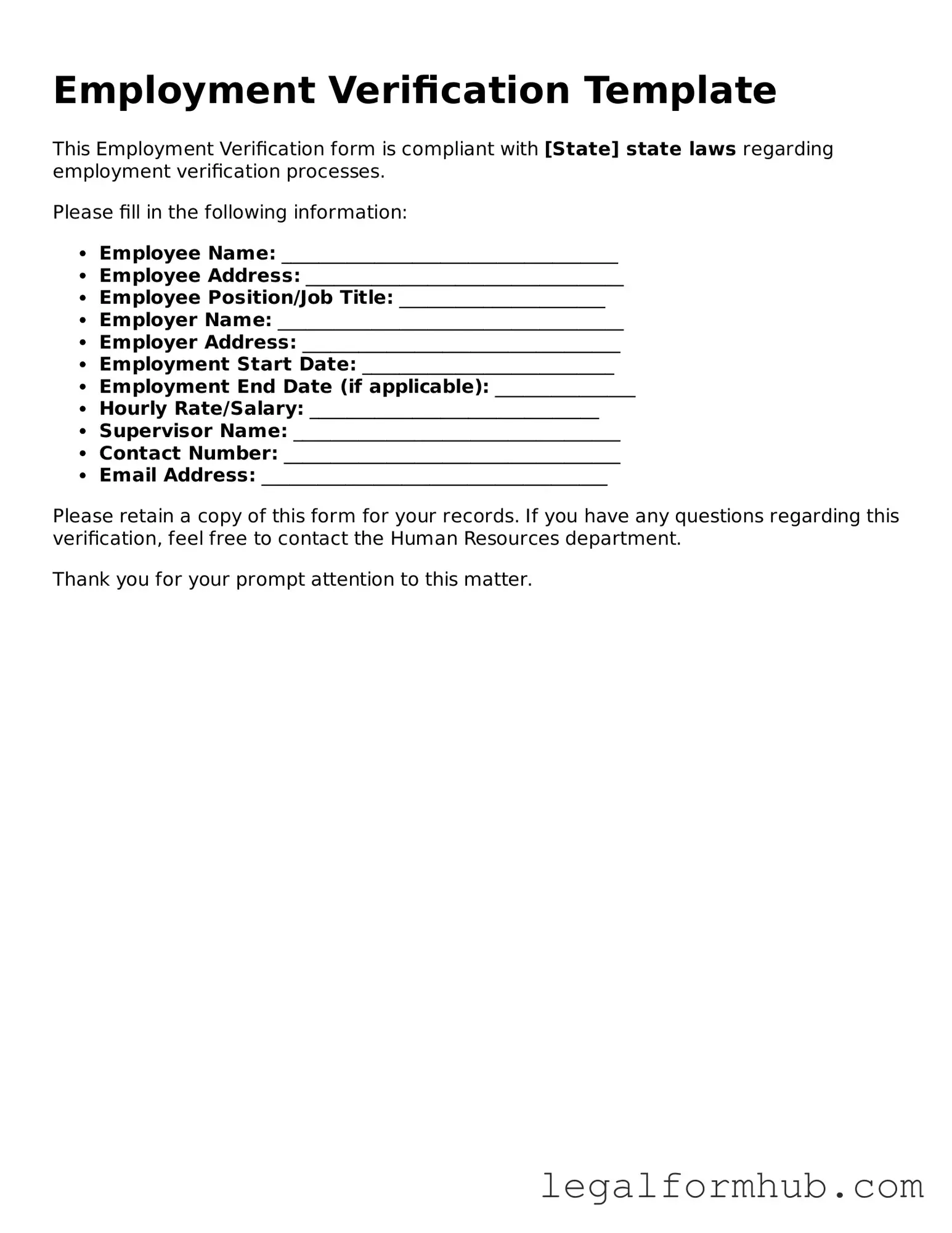The Employment Verification form is similar to the W-2 form, which is used by employers to report wages paid to employees and the taxes withheld. Both documents serve to confirm an individual's employment status and income. The W-2 provides a summary of earnings and tax contributions for the year, while the Employment Verification form typically focuses on current employment status and duration. Employers often use both forms to verify income for loans or rental applications.
Another document that shares similarities is the pay stub. A pay stub details the earnings an employee receives during a specific pay period, including deductions for taxes and benefits. Like the Employment Verification form, it provides proof of employment and income. However, the pay stub gives a more granular view of earnings over time, whereas the Employment Verification form usually confirms employment status and may summarize income over a longer period.
The I-9 form is also comparable, as it verifies an employee's identity and eligibility to work in the United States. While the Employment Verification form confirms employment details, the I-9 focuses on legal work status. Both documents are essential for employers to maintain compliance with federal regulations regarding employment verification.
In today's fast-paced business environment, efficient documentation is critical for maintaining clarity and compliance, particularly when it comes to financial transactions. The Free And Invoice PDF form serves as a vital tool for both individuals and businesses, allowing them to create invoices that are clear and professional. For those who want to streamline their invoicing process and ensure they keep thorough records, utilizing resources like this can be immensely beneficial—visit Fill PDF Forms to get started with creating your invoices today.
Similar to the Employment Verification form is the Reference Letter. A Reference Letter is often written by a previous employer or colleague and serves to validate a person's work experience and skills. While the Employment Verification form is more formal and standardized, a Reference Letter provides a personal touch and can highlight specific achievements or qualities that may not be captured in a standard form.
The Job Offer Letter is another related document. This letter outlines the terms of employment, including job title, salary, and benefits. Both the Job Offer Letter and Employment Verification form serve to confirm employment, but the former is issued before the start of employment, while the latter is used to verify ongoing employment status.
The Background Check Authorization form is also similar in purpose. This document is used to obtain permission from an employee or candidate to conduct a background check. Both forms are part of the employment verification process, but the Background Check Authorization focuses on the individual's history, whereas the Employment Verification form confirms current employment status.
Additionally, the Social Security Administration (SSA) Verification Letter serves a similar function. This letter verifies an individual's earnings and work history for Social Security purposes. While the Employment Verification form is often used for employment-related verification, the SSA Verification Letter is specifically aimed at confirming earnings for retirement or disability benefits.
The Certificate of Employment is another document that resembles the Employment Verification form. This certificate is issued by an employer to confirm that an individual is employed at their organization. It usually includes the employee's job title and length of employment, similar to the details provided in the Employment Verification form.
Lastly, the Tax Return is comparable in that it provides a comprehensive view of an individual's income. While the Employment Verification form typically confirms current employment status, a Tax Return reflects earnings over a specific year. Both documents can be used to verify income for various purposes, such as loan applications or rental agreements.
